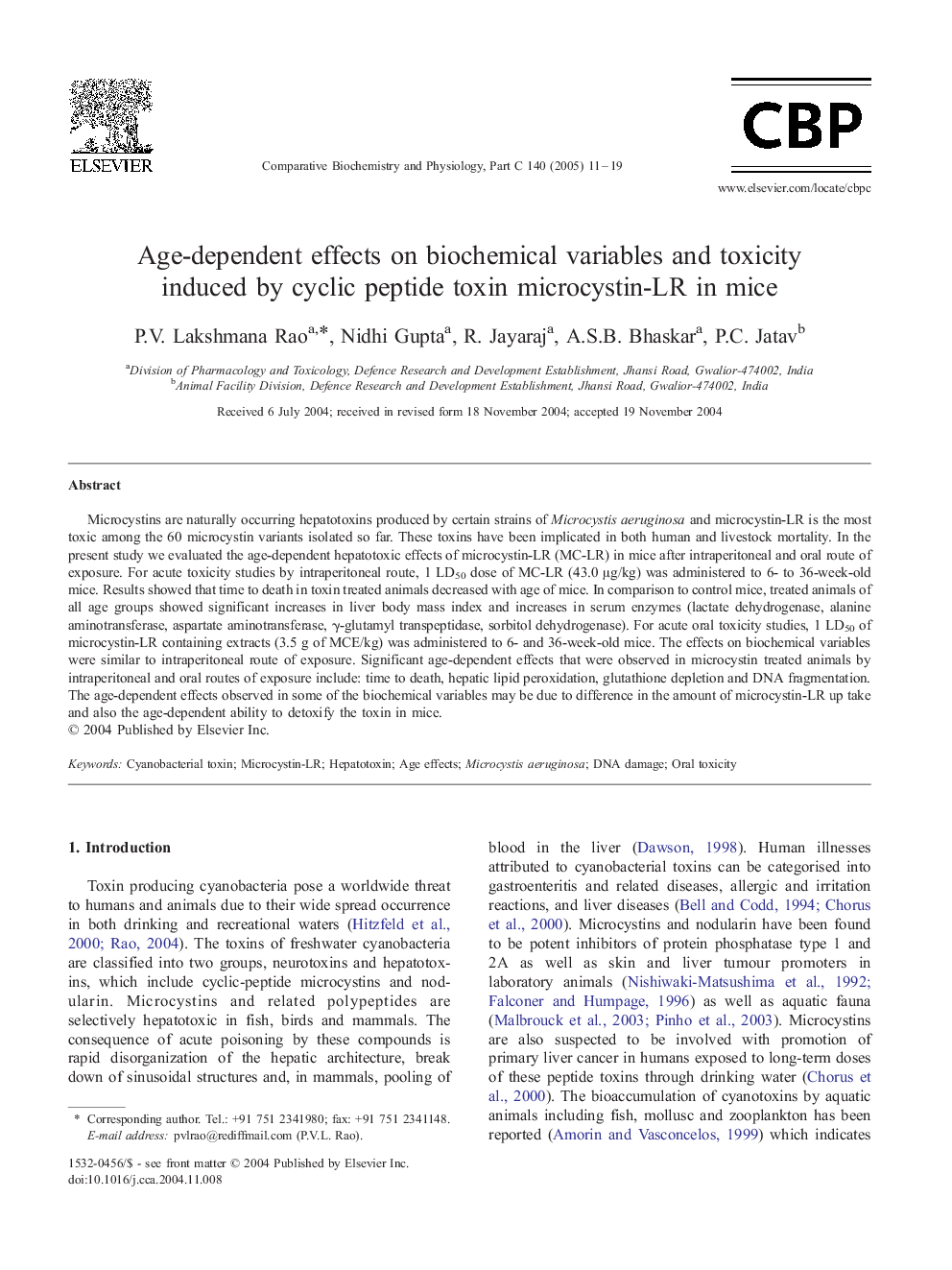| Article ID | Journal | Published Year | Pages | File Type |
|---|---|---|---|---|
| 10821819 | Comparative Biochemistry and Physiology Part C: Toxicology & Pharmacology | 2005 | 9 Pages |
Abstract
Microcystins are naturally occurring hepatotoxins produced by certain strains of Microcystis aeruginosa and microcystin-LR is the most toxic among the 60 microcystin variants isolated so far. These toxins have been implicated in both human and livestock mortality. In the present study we evaluated the age-dependent hepatotoxic effects of microcystin-LR (MC-LR) in mice after intraperitoneal and oral route of exposure. For acute toxicity studies by intraperitoneal route, 1 LD50 dose of MC-LR (43.0 μg/kg) was administered to 6- to 36-week-old mice. Results showed that time to death in toxin treated animals decreased with age of mice. In comparison to control mice, treated animals of all age groups showed significant increases in liver body mass index and increases in serum enzymes (lactate dehydrogenase, alanine aminotransferase, aspartate aminotransferase, γ-glutamyl transpeptidase, sorbitol dehydrogenase). For acute oral toxicity studies, 1 LD50 of microcystin-LR containing extracts (3.5 g of MCE/kg) was administered to 6- and 36-week-old mice. The effects on biochemical variables were similar to intraperitoneal route of exposure. Significant age-dependent effects that were observed in microcystin treated animals by intraperitoneal and oral routes of exposure include: time to death, hepatic lipid peroxidation, glutathione depletion and DNA fragmentation. The age-dependent effects observed in some of the biochemical variables may be due to difference in the amount of microcystin-LR up take and also the age-dependent ability to detoxify the toxin in mice.
Keywords
Related Topics
Life Sciences
Biochemistry, Genetics and Molecular Biology
Biochemistry
Authors
P.V. Lakshmana Rao, Nidhi Gupta, R. Jayaraj, A.S.B. Bhaskar, P.C. Jatav,
